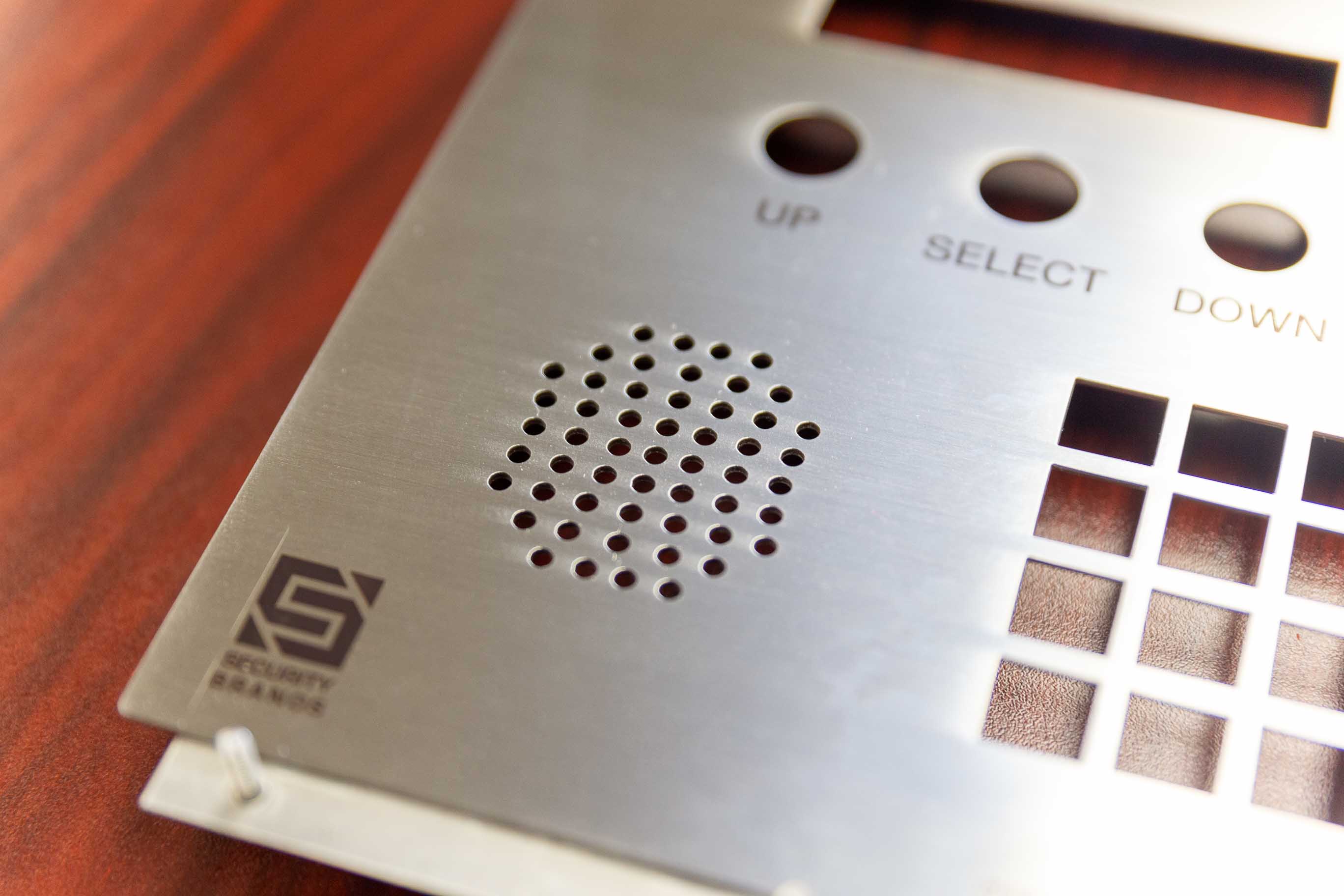
Last updated July 2025
In any given metal fabrication project, a variety of tools and techniques are employed, and CNC punching is among the most effective. At All Metals Fabricating, our CNC punching capabilities offer the versatility and efficiency needed to produce complex designs and precise patterns, resulting in high-quality parts and minimizing material waste.
Learn more about what CNC punching is, how it works, and how it can benefit you.
Computer numerical control punching, commonly referred to as CNC punching, is a sheet metal manufacturing process using programmable machines.
CNC punch presses are electromechanical devices that use programmed instructions to punch precise patterns into sheet metal. These machines are available with either a single head and tool rail or a multi-tool turret.
If you're familiar with our CNC lathe services, you’ll recognize that CNC punching follows a similar automated process. The desired geometry is typically provided in a 2D DXF or a DWG file format, though a 3D model can be used in certain circumstances. This data is then imported into computer-aided manufacturing (CAM) software to choose the best tooling for the job and generate the machine code.
CNC nesting software can assist in choosing the best arrangement for the sheet metal size.
The sheet metal will then be moved by the CNC punch press to precisely place it under the punch head, allowing the required design to be punched and created. Some machines operate on two axes, while others can move in a third axis for greater part complexity.
The materials that can be used in CNC machining are endless, including stainless steel, aluminum, brass, wood, plastic, and more. At All Metals Fabricating, we can always offer guidance on material selection for your parts if you’re trying to determine your best option.
Many machines can handle thicknesses from 0.5mm to 6mm, though this range depends on the material and the tooling.
A punch press offers a wide range of capabilities, from basic shapes like rectangles or circles, for instance, to complex geometries formed through a combination of single strikes and overlapping geometries. Some advanced machines can tap threads, fold small tabs, and punch sheared edges without leaving any tool witness marks, making them extremely productive within the component cycle time.
Once a design has been programmed, it may be reused time and time again, increasing productivity by eliminating technical and time-consuming manual operations.
CNC automation is critical to precision fabrication, ensuring consistent accuracy and repeatability, even for complex designs. By handling the most exacting aspects of the process, CNC machines significantly reduce production time while maintaining tight tolerances.
CNC punching machines are fast and accurate, especially when used on designs optimized for punch presses. They also produce less waste through features like optimized nesting and automated defect detection.
With minimal operator intervention and little wasted material, CNC punching offers a safe, efficient, and cost-effective solution for sheet metal fabrication.
At All Metals, we always look for the most cost-effective way to manufacture your part, including the best possible tooling. While your design plays a big role in determining what tools are needed, we’re also happy to provide design for manufacturing (DFM) guidance to help you make the most of each feature. Some commonly used tooling options include:
Cluster tools can increase speed and reduce cost. The tool contains multiple punches to create several holes simultaneously, ideal for perforated features like ventilation panels.
Engraving tools can allow you to mark parts with product names, issue levels, or part numbers, useful for processes like inventory control. Markings can be updated quickly in the CNC program, ensuring flexibility as product requirements change.
You can achieve your project goals faster and more efficiently through the employment of automated manufacturing technologies like a CNC punch press. At All Metals Fabricating, we integrate CNC punching into our sheet metal fab as often as possible to maximize productivity and deliver high-quality results.
Could your next project benefit from a CNC punch press? Request a quote today to get started and see how efficient we can be at our Texas sheet metal fabrication shop!
